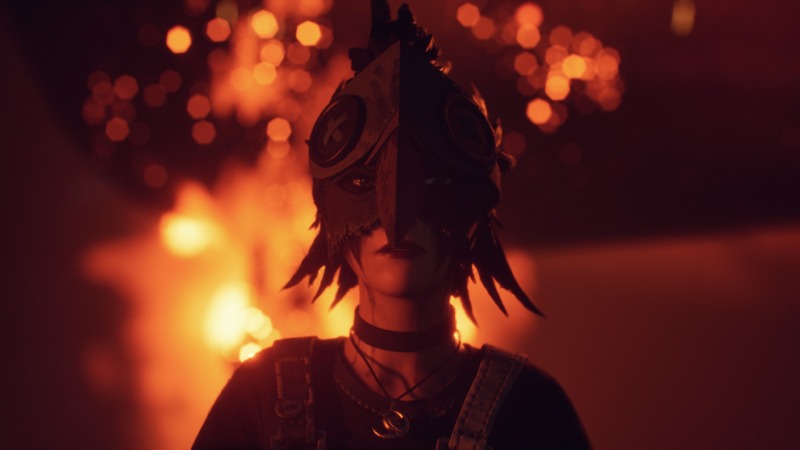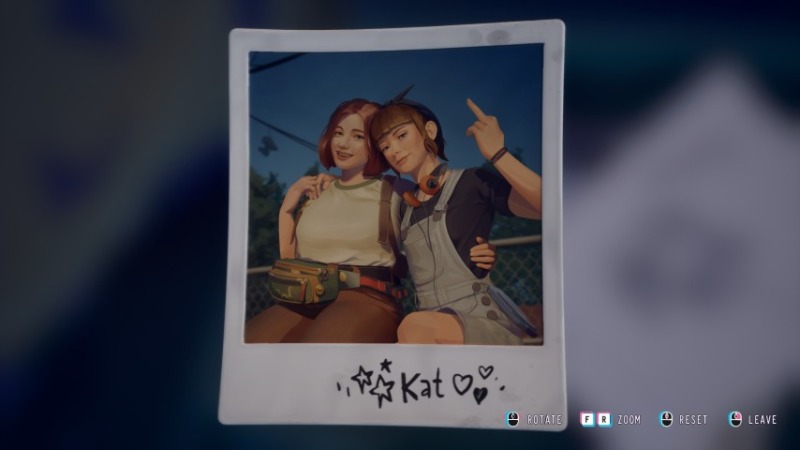Lost Records: Bloom and Rage Is a Triumphant Punk Rock Symphony to Girlhood

Lately I’ve been talking to my therapist about visiting a rage room for the first time. It’s a place where you pay money to be in a room full of breakable objects at your disposal. Armed with a protective suit and a few weapons, like a bat or a mallet or a wrench, you destroy these items as a means of expelling your anger. I tell her that maybe I don’t need a rage room; maybe going to the beach every now and then is enough. “Why not both?” she asks me. “Deep trauma isn’t just about sadness. You’re angry. I want to tap into that.”
Lost Records: Bloom and Rage is aptly named, for it’s a game about rage—specifically the rage of teen girls and women. It’s a game about girlhood, about how hard it is to just be a girl in a world that seeks to undermine you at every stage in your life, in every way it can, not always with a bat or a mallet or a wrench, but with a force just as overpowering. But it’s also about how we as women can bloom beautifully together, despite the patriarchy and capitalism’s attempts to nip us in the bud from the moment we’ve been planted. Ultimately, it’s a gut-wrenching narrative and an unforgettable experience that this medium is better off for having.
Lost Records: Bloom and Rage is split between two timelines: one during the present day in 2022 and one in the summer of 1995. In the present day, Swann receives a message from Autumn, one of her three close friends from that unforgettable summer… only that this isn’t quite the case, as both have largely forgotten what took place. Swann, who you play as, mostly only remembers that the four of them promised to part ways and never speak of it again. But Autumn has received a mysterious package addressed to all four, the small-town girls who made up the punk girl band called Bloom and Rage, and so you’re off to uncover the truth, tragedy, and trauma of Swann and her friends.
As time switches back and forth, you’ll probably be reminded of the TV show Yellowjackets. There is an element of horror here, as there’s a mystery hiding in the depths of the woods Swann used to frequent with Autumn, Kat, and Nora, but it’s a cozier experience than that of a show in which women become cannibals. Don’t worry, though—it’s just as queer.
But it’s important to note that this choice-driven adventure doesn’t stay cozy all the way by any means. The timeline of 1995 features Swann, then a shy and introverted teenager who observes the world through the lens of her camcorder, meeting and forming a beautiful connection with each of her friends. It’s a slow burn, almost too slow but not quite, before it ramps up right at the end of the first half of the story, known as Tape 1. From the beginning, Tape 2 makes it clear that the slow burn is necessary for everything that comes after, which feels like a nonstop rollercoaster that will likely end in you shedding at least a few tears.
And that’s largely because all four of these girls are so superbly written that it’s impossible not to love them. Quiet and preferring to hide behind a camera, Swann is the perfect protagonist—a witness to the love and laughter and loss of this fateful summer. She’s honestly a bit cringey sometimes, reacting in a way or saying something that reminds me of how I must’ve come across when I was an awkward teenage girl struggling to fit in and figure out the kind of woman I wanted to grow into. Where the first Life is Strange had some cringey dialogue in a way that mostly felt clumsy, here developer Don’t Nod deploys it with sharp precision to paint an achingly authentic picture of girlhood. It’s purposeful and delightful, and I suspect it rings true for anyone who has ever been a teenage girl.
Then there’s Nora. The bad girl whose face is constantly enshrouded in the smoke emanating from her cigarette, at one point she confesses rather proudly that she adores attention. She’s a flirt with no filter, and she sometimes borders on annoying, but it’s a testament to the quality of the writing here that she never crosses that line; she’s just unabashedly a lot in ways that are easy to love. She’s especially close with Autumn, a sweet girl who loves to play videogames and is fairly straight-laced. When you make trouble—and trouble you’ll certainly make—Autumn is the voice of reason that focuses on practicalities and doing the right thing. But she’s no killjoy either; she’s wonderfully earnest and considerate of her friends.

And finally there’s Kat. A beautiful thing about Lost Records: Bloom and Rage, ever so rare in this industry and especially at the level where games like this are made, is that you’re a girl whose only romance options are other girls. Out of these three amazing friends, I chose to romance Kat, who’s arguably the character at the center of this story for reasons you’ll discover by the end of Tape 1. She’s an angry little thing, fierce and unstoppable like a category 5 hurricane. But her eye is her friends and her love for writing. A poet and a songwriter, she’s the soul of this game for me—the vehicle through which the unsaid goes said.
-

-

-

-

-

-

-

-

-

-

-

-

-

-

-

-

-

-

-

-

-

-

-

-

-

-

-

-

-

-

-

-

-

-

-

-

-

-

-

-








































